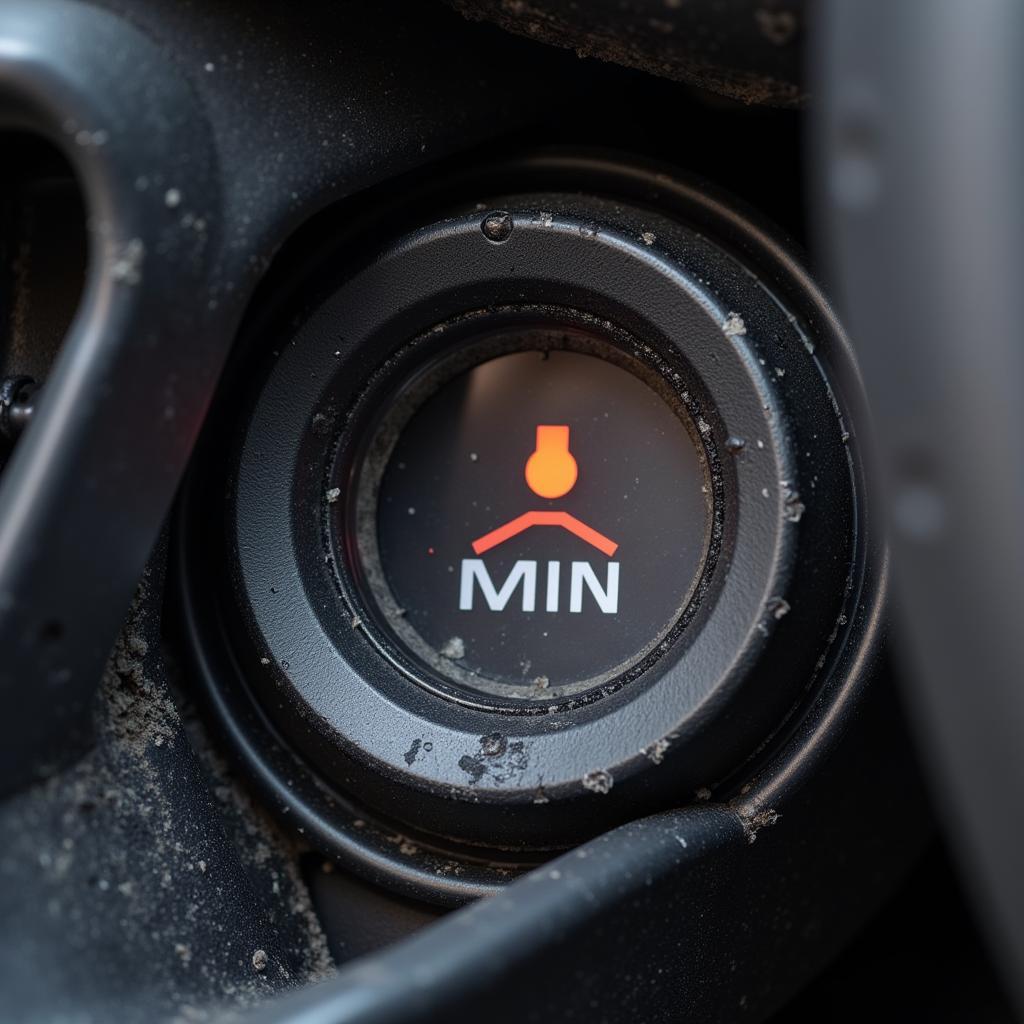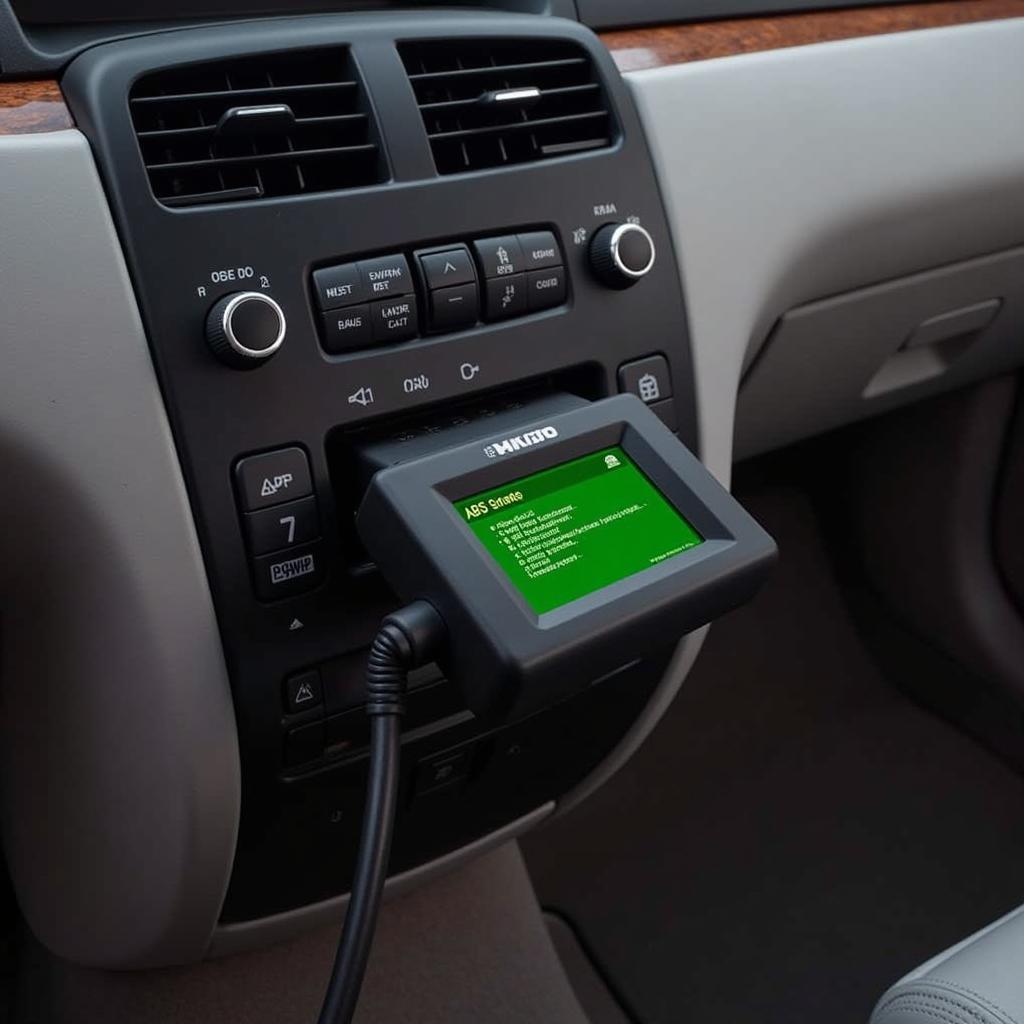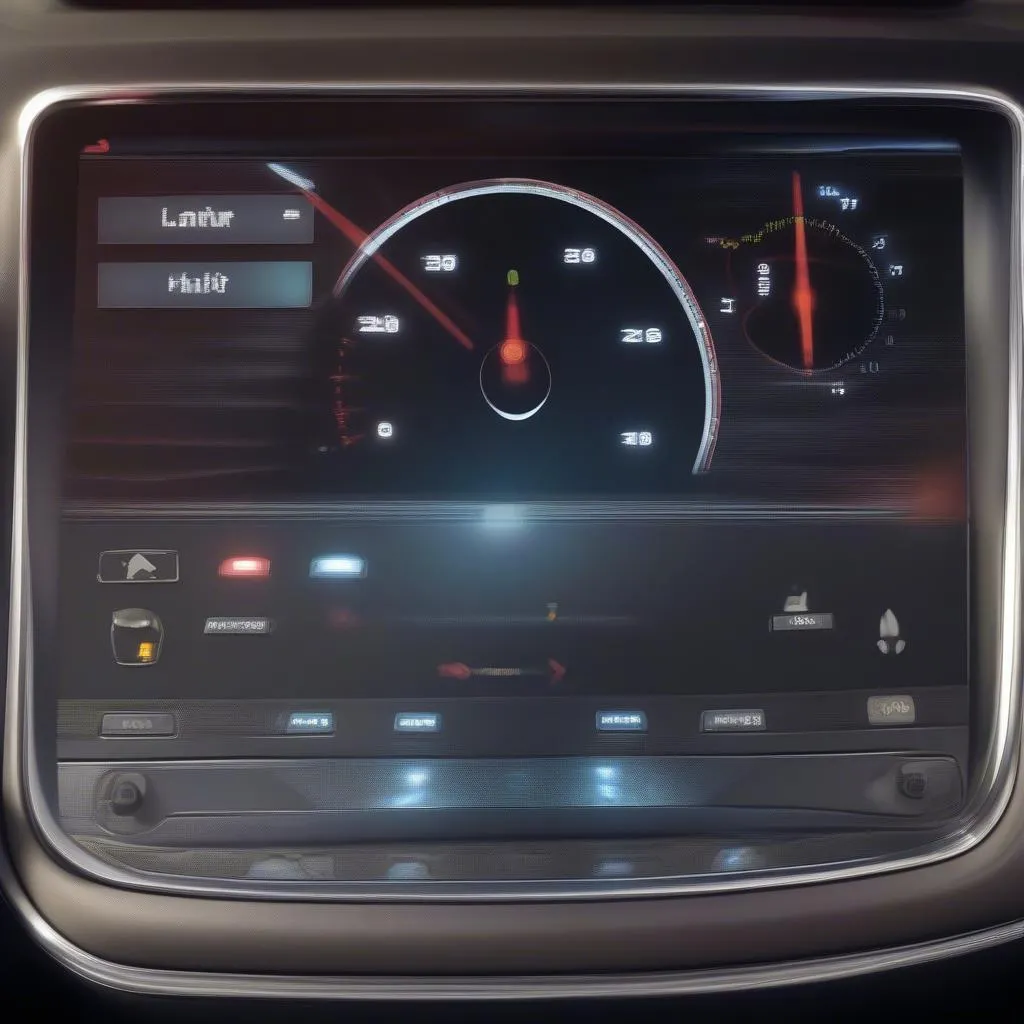The brake warning light on your dashboard is a crucial safety feature, and when it illuminates in your 2007 Honda Odyssey, it’s essential to address the issue promptly. This light can signal a range of problems, from low brake fluid to more serious issues within the braking system. This article dives into the common causes behind a 2007 Honda Odyssey brake warning light and provides guidance on troubleshooting and resolving the problem.
Understanding Your Brake Warning Light
The brake warning light is designed to grab your attention if there’s an issue with your braking system. It typically illuminates when you engage the parking brake, but if it stays on or flickers while driving, it’s time for investigation.
Common Causes of a 2007 Honda Odyssey Brake Warning Light
Here’s a breakdown of the most frequent culprits behind that glowing brake warning light:
1. Low Brake Fluid
The most common reason for the brake warning light is low brake fluid. Brake fluid is the lifeblood of your braking system, transmitting force from the brake pedal to the wheels. Over time, brake pads wear down, and this wear can lead to a drop in brake fluid level.
How to check:
- Locate the brake fluid reservoir under the hood – consult your owner’s manual if needed.
- Check the fluid level against the “MIN” and “MAX” markings on the reservoir.
- If the level is low, add the correct type of DOT 3 or DOT 4 brake fluid, as specified in your owner’s manual.
 Low Brake Fluid Reservoir
Low Brake Fluid Reservoir
Caution: Never drive with extremely low brake fluid, as this can lead to brake failure. If you suspect a leak, seek professional help immediately.
2. Worn Brake Pads
Your Odyssey’s brake pads are designed to wear down gradually with use. When they reach a certain thinness, the brake warning light will activate to signal the need for replacement.
How to check:
- Look through the spaces between your wheel’s spokes to visually inspect the brake pads.
- If the pad material is less than 1/4 inch thick, it’s time for new pads.
 Worn Brake Pads
Worn Brake Pads
Important: Driving with worn brake pads not only triggers the warning light but also significantly reduces braking efficiency and can damage your rotors.
3. Faulty Brake Light Switch
The brake light switch is a small but vital component that activates your brake lights when you press the pedal. A malfunctioning switch can cause the brake warning light to come on, often accompanied by brake lights that don’t work.
How to diagnose: This typically requires some electrical troubleshooting, and it’s best left to a professional mechanic unless you have experience with automotive electrical systems.
4. ABS Issue
Your 2007 Honda Odyssey is equipped with an Anti-lock Braking System (ABS). If the ABS module detects a problem, it can illuminate the brake warning light. This could be due to a faulty wheel speed sensor, a malfunctioning ABS module, or an issue with the wiring.
How to diagnose: Since ABS issues can be complex, it’s advisable to use an OBD-II scanner to read the trouble codes stored in your vehicle’s computer. This will help pinpoint the source of the problem.
 OBD-II Scanner Connected
OBD-II Scanner Connected
When to Seek Professional Help
While some brake warning light causes can be addressed with basic maintenance, others require professional expertise. Consider taking your Odyssey to a trusted mechanic if:
- You’ve topped off the brake fluid, but the light remains on.
- You suspect a brake fluid leak.
- You’re uncomfortable checking your brakes or lack the necessary tools.
- The warning light points to a potential ABS problem.
Keeping Your Brakes in Top Condition
Regular brake maintenance is crucial for your safety on the road. Follow these tips to keep your Odyssey’s brakes in optimal shape:
- Regular Inspections: Have your brakes inspected by a qualified mechanic at least once a year or every 12,000 miles.
- Brake Fluid Flush: Brake fluid should be flushed and replaced according to your Honda’s maintenance schedule.
- Quality Parts: When replacing brake components, opt for high-quality parts from reputable brands.
Remember, a glowing brake warning light is a sign that your vehicle needs attention. Addressing the problem promptly ensures your safety and prevents potentially costly repairs down the road.

